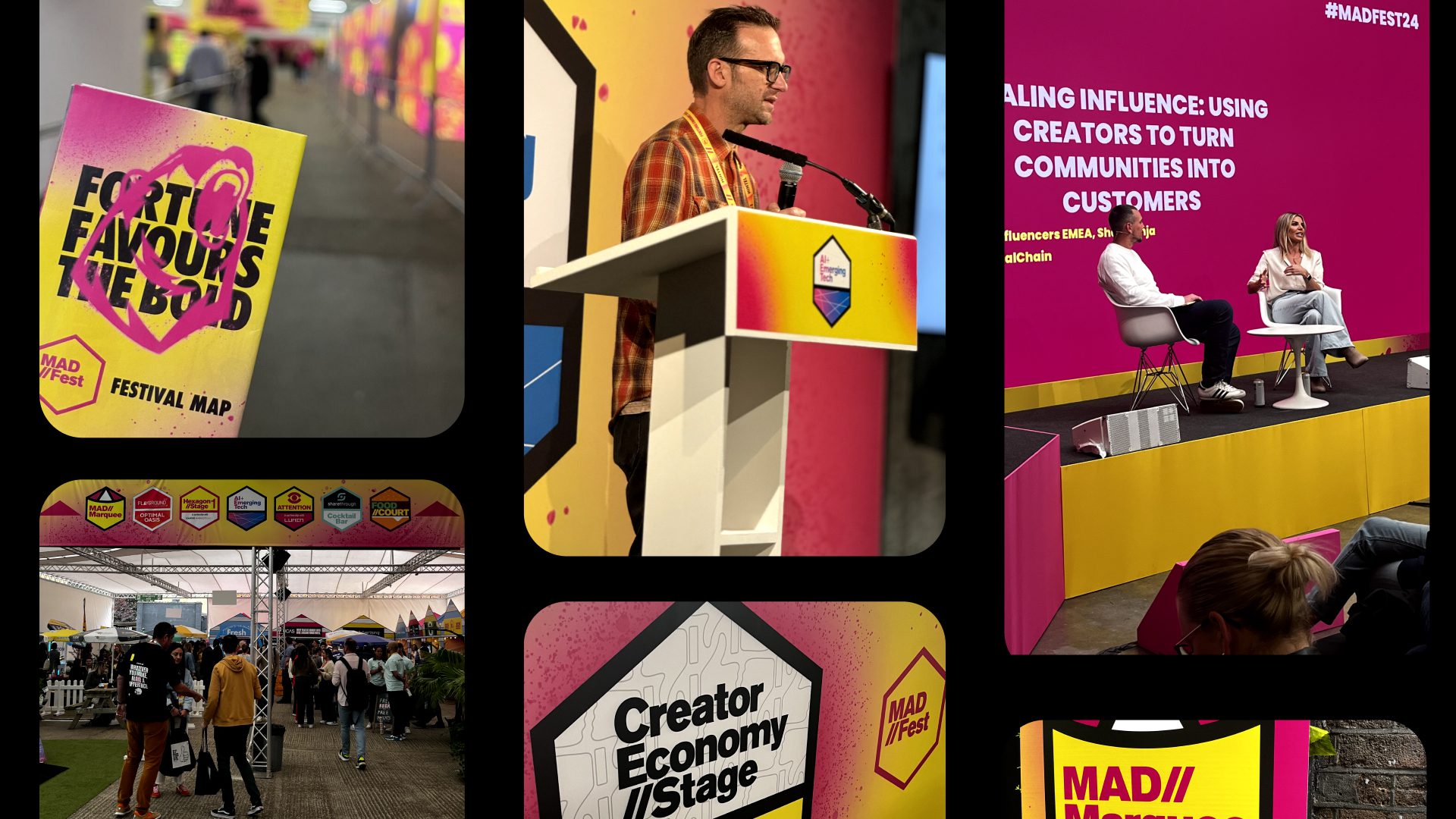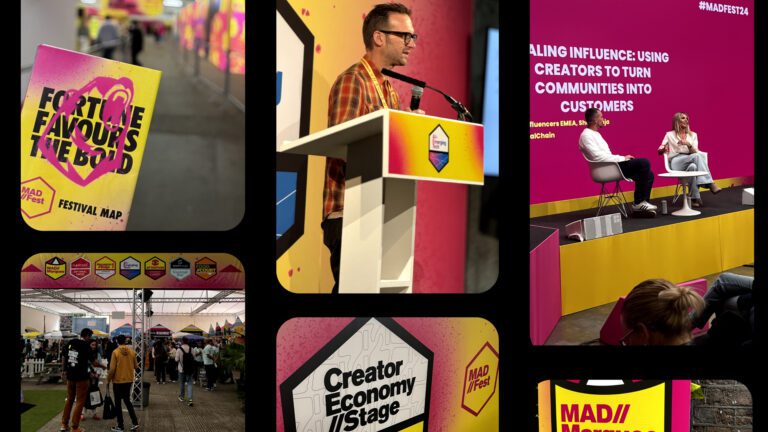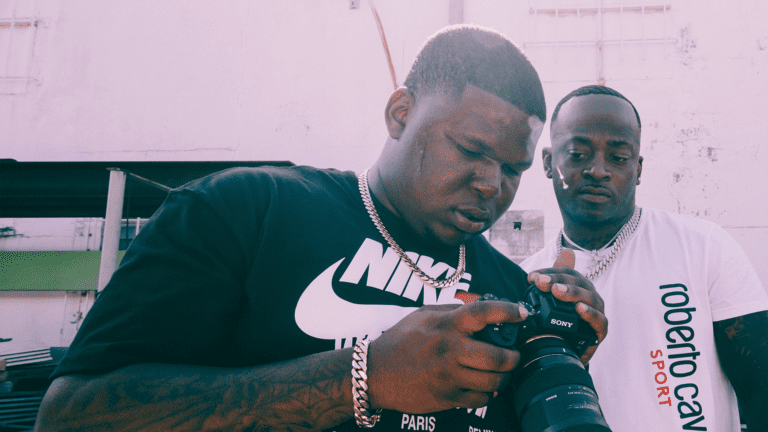Top takeaways from our time at MAD//Fest
Bigger venues, exclusive hangout areas, fresh new partners…MAD//Fest was better than ever this year. And it wasn’t just because we were featured across two packed-out stages with Brave Bison and SharkNinja.
If you couldn’t make it this year, we’re here with your essential roundup. Here’s our top takeaways from marketing’s most disruptive advertising festival.
1. The next big trend? Measuring creator effectiveness.
Our senior strategist Gareth Harrison predicts the effectiveness of influencer activity will be under the microscope as we see this year out: “As influencer marketing becomes a staple in advertising strategies, marketers will need to demonstrate the tangible impact of investments in creators through precise data. To keep us ahead of the curve, our effectiveness tool provides real-time performance data on influencer posts. This means brands can instantly see if a post is surpassing benchmarks, letting us make swift, informed decisions around paid media.”
2. Creators are most effective when used throughout the funnel.
During Gareth’s session with SharkNinja’s director of social media and influencers Eva Bojtos, Eva also shared her thoughts on what the future holds for creator collaboration. Her advice to brands: partner with creators throughout the funnel for maximum impact. It’s not enough to see creators as a one-and-done activation. The best brands will collaborate with creators thoughtfully and credibly by building trust with their audiences across long-term partnerships.
3. AI still requires human rigour, but it does have countless genuinely useful applications…
As our group strategy director Ric Hayes and Brave Bison’s director of AI and creative Matt Garbutt took to the crowded AI and Emerging Tech Stage, one thing was clear: people are craving meaningful, relevant relationships with brands. But the impact of data regulation and audience fragmentation across the digital landscape has left brands struggling to know who their audiences really are. Forget the hype and hot air: when it comes to real problems brands face, generative AI can help brands make massive inroads into a solution.
4. …Like focus groups at your fingertips.
We’ve been researching and channeling large language models to identify and bring our clients’ audiences to life. By building silicon audiences – AKA audience personas – our proprietary AudienceGPT tool gives us the ability to talk to audiences like never before, opening a window directly into their world and identifying which channels, interests and issues matter most to them. Guests at Ric and Matt’s session The AI Ad-Vantage: Speeding up Strategy with Silicon Audiences saw this for themselves as we demonstrated our AudienceGPT’s custom audience persona Amy in action.
“As influencer marketing becomes a staple in advertising strategies, marketers will need to demonstrate the tangible impact of investments in creators through precise data.”
5. Be a brand that actually puts its consumers first.
If you truly want to be generous, focus on the consumer, not your brand. So many brands say they put their consumer first, says Cadbury’s, but how many brands actually do that? Despite the success of the brand’s yearly Secret Santa UK Christmas campaign, the ad wouldn’t resonate with South African audiences because it wasn’t a Christmas tradition. Being generous here meant being sensitive to those cultural nuances that can make or break a campaign.
6. Social can make customers out of unexpected communities.
We’d bet most consumer tech companies would put “creating a winning TikTok strategy” low on their marketing priority list. Not SharkNinja. “SharkNinja is social-first in everything we do,” explains Eva during our session Scaling Influence: Using Creators to turn Communities into Customers. SharkNinja knows that understanding audience motivations and getting to the root of those communities on social – even if they’re in unexpected places – is core to moving the needle with consumers. If you need proof, look at the Ninja Creami dessert maker and Shark FlexBreeze fan, both of which became sellout products in the US.
7. People liking your ad isn’t nearly as important as people remembering it.
Once your ad is out in the world, it’s either memorable or it isn’t. Audiences’ reactions to your ad? That’s subject to change. When Just Eat launched its Did Somebody Say ad campaign, some weren’t keen – but the brand didn’t mind if people didn’t like the ad, because at least they remembered it. In fact, after Just Eat rolled out its celeb-clad activations that looked more like music videos than ads, audience sentiment began to work in Just Eat’s favour. All this earned the ad’s catchy mnemonic a 71% brand recall rate, according to CMO Susan O’Brien.
8. Social is table stakes. It’s only going to get bigger.
ASOS’s director Elton Ollerhead and head of creative James Cahill took to the packed-out DigiAds Stage to deliver a keynote on how, along with its brand partners, the global retailer speaks the language of fashion-loving 20-somethings. Spoiler alert: it’s not with a high budget TV spot.
“Social plays a critical part in engaging and capturing the attention of young fashion fans,” says Elton. ASOS used examples of social-first creative from its partners Sol de Janeiro, Adidas and Nike to bring the point home, emphasising the need for individuality and inclusivity when it comes to tapping into Gen Z. It’s a pertinent reminder that, no matter how crucial social may be in your marketing mix right now, it’s only set to get bigger.





